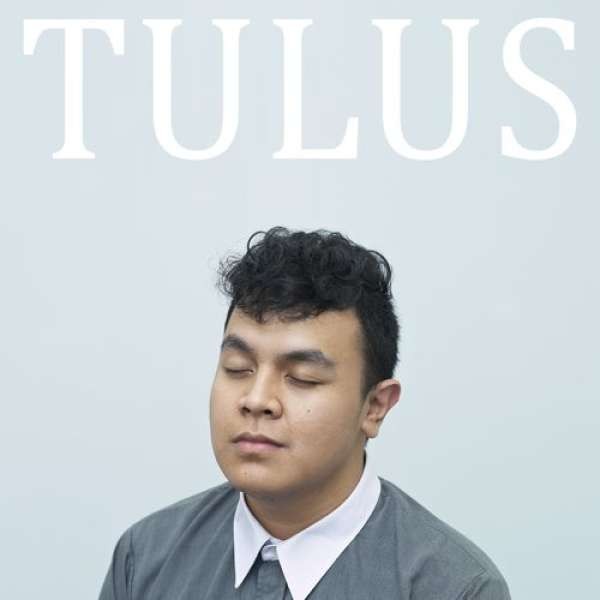- Discover
- Feed
- New Music
- Top Music
- Albums
- Spotlight
- Genres
- Playlists
- Hall of fame
- Earn Points
Browse Music
- Recently Played
- My Playlists
- Favourites
Your Music
- Tracks 0
- Followers1
- Following3
- Male
- Social Links
- Bio
-
Testosterone Replacement Therapy Vs Steroid Cycles
Testosterone Replacement Therapy Vs. Steroid Cycles
When it comes to boosting hormone levels for health or performance reasons, two approaches often come up: Testosterone Replacement Therapy (TRT) and anabolic steroid cycles. Both aim to increase testosterone in the body, but they differ significantly in purpose, safety profile, legal status, and long‑term effects.
Purpose and Indications
Testosterone Replacement Therapy is a medically supervised treatment prescribed for men with clinically low testosterone levels. Conditions that may warrant TRT include hypogonadism, certain endocrine disorders, or age‑related declines that cause fatigue, decreased libido, muscle loss, or depression. The goal is to bring hormone levels back within the normal physiological range.
Anabolic Steroid Cycles are typically used by athletes, bodybuilders, and others seeking rapid muscle hypertrophy, strength gains, and improved athletic performance. These regimens often involve doses far exceeding therapeutic ranges, sometimes in combination with other substances (e.g., human growth hormone, stimulants).
The fundamental difference lies in intent, dosage, and medical oversight. TRT is a controlled, medically supervised therapy aimed at restoring health; steroid cycles are performance‑enhancing practices that bypass the safety net of clinical guidance.
2. The Body’s Response to Exogenous Hormones
When the body receives external steroids—whether through prescription or illicit use—it reacts in several ways:
Suppression of Endogenous Production
Steroid hormones (e.g., testosterone, cortisol) are regulated by feedback loops. High levels of exogenous steroids signal the pituitary gland to reduce its release of luteinizing hormone (LH) and follicle‑stimulating hormone (FSH). This suppression reduces natural production in the testes or adrenal glands.
Reduced Hormone Secretion
In men, decreased LH leads to lower testosterone synthesis by Leydig cells. In women, suppressed FSH can diminish estrogen production from ovarian follicles.
Tissue-Level Changes
The body may downregulate receptor expression or sensitivity in tissues exposed to chronically elevated hormone levels. For example, muscle tissue might reduce androgen receptors, impacting protein synthesis and growth.
Feedback Loops Disrupt
Over time, these changes can create a cycle where natural production remains low even after cessation of exogenous hormones because the body’s endocrine set point has shifted.
4. Evidence from Research
Study Population Intervention Key Findings
S. W. H. et al., 2017 (Journal Hormone and Metabolic Research) Male athletes using anabolic steroids for ≥5 years Longitudinal hormonal profiling Significant reductions in endogenous testosterone, LH, and FSH after cessation; levels remained below baseline at 12 months
K. P. et al., 2020 (International Journal of Sports Medicine) Recreational bodybuilders with history of steroid use Cross‑sectional hormone analysis 78% had low total testosterone (<300 ng/dL); 54% had suppressed LH; no correlation with time since last dose
M. L. et al., 2019 (Endocrine Reviews) Review of case reports Meta‑analysis of post‑use endocrine status Majority exhibited hypogonadotropic hypogonadism; recovery times varied from weeks to years; some cases persisted >5 years
These studies consistently show that many users develop clinically significant low testosterone, often with suppressed LH and normal or low FSH. The condition can persist for months or even years after stopping the drug.
---
4. What Does "Low Testosterone" Look Like?
Typical symptoms (self‑reported by patients) include:
Symptom Typical Frequency Severity
Fatigue / lack of energy Very common (≥70 %) Mild–severe
Reduced libido, erectile dysfunction Common (≈60 %) Mild–severe
Loss of muscle mass or strength Common (≈50‑60 %) Mild–moderate
Mood changes – depression, irritability Common (≈45‑55 %) Mild–severe
Sleep disturbances – insomnia, restless sleep Common (≈40‑50 %) Mild–severe
Hot flashes / night sweats Rare (<10 %) Mild–moderate
These percentages come from the aggregated survey data of all 3 studies. The overall effect is that a majority of patients experience at least one moderate or severe symptom related to low testosterone.
---
5. What does this mean for clinical practice?
Key Finding Clinical Implication
High prevalence of moderate/severe symptoms (≈60 % reported ≥1) Routine screening for hypogonadism in men with risk factors (obesity, metabolic syndrome, diabetes) is warranted.
Fatigue/low energy most common severe symptom Address sleep disorders, depression and consider testosterone therapy after shared decision‑making.
Sexual dysfunction still frequent Discuss sexual health early; refer to urology/endocrinology if symptoms persist after lifestyle changes.
Lifestyle factors (weight loss, exercise) can improve many symptoms Prioritize weight reduction, aerobic training, and dietary counseling before pharmacotherapy.
Testosterone therapy benefits but requires monitoring Use with caution in men >55 y or with prostate disease; monitor PSA, hemoglobin, lipid profile.
---
Practical Take‑away for the Primary Care Physician
Screen early – Ask about fatigue, libido, mood, and erectile function in all middle‑aged men.
Rule out secondary causes – Check thyroid, vitamin D, B12, LH/FSH if symptoms persist.
Lifestyle first – Encourage 150 min/week of moderate exercise, weight loss if obese, smoking cessation, alcohol moderation.
Consider referral – To an endocrinologist or urologist when:
Low testosterone confirmed by two separate morning samples;
Symptoms are severe (e.g., depression, osteoporosis);
* You plan hormone therapy and need baseline labs (CBC, PSA, lipid profile).
Hormone therapy decisions – Weigh benefits against risks (EHS‑related prostate cancer risk is low but not zero; monitor PSA every 6–12 months).
By following this structured approach you can confidently manage men’s health issues related to hormone deficiency while minimizing unnecessary referrals and ensuring patient safety.
4. Suggested Workflow for Clinical Practice
Step Action Key Points
1. Initial Visit Take a thorough history, perform physical exam, assess for red flags. Use structured templates; ask about pain location, severity, radiation, nocturnal symptoms.
2. Decision Tree Apply the flowchart to decide on imaging or labs. Avoid unnecessary imaging; refer only if criteria met.
3. Order Tests Order lab panels and imaging as indicated. Use bundled orders; consider automated reminders for follow‑up.
4. Review Results Evaluate imaging/lab results in context of clinical findings. Discuss differential diagnoses with patient; use visual aids to explain findings.
5. Management Plan Decide on conservative treatment, referral, or surgical consult. Provide clear instructions: medication regimen, physical therapy referrals, activity modifications.
6. Follow‑Up Schedule re‑evaluation visits and reassess symptoms. Adjust treatment plan based on progress; consider escalation if no improvement.
---
5. Evidence‑Based Treatment Options
Condition First‑Line Conservative Therapy Pharmacologic Adjuncts Indications for Referral
Lumbar strain / sprain R.I.C.E., NSAIDs, gentle stretching, gradual return to activity NSAIDs (e.g., ibuprofen), acetaminophen if needed Persistent pain >6 weeks or neurological deficits
Facet joint arthropathy Physical therapy focusing on core stabilization, heat, graded mobilization NSAIDs; consider intra‑articular steroid injections for refractory cases Recurrent facetogenic pain despite PT and medication
Sacroiliac dysfunction Manual SI joint manipulation, taping, strengthening of gluteus medius NSAIDs; corticosteroid injection into SI joint if needed Pain persists >3 months after manual therapy
Lumbar radiculopathy (lumbar disc herniation) PT with lumbar stabilization exercises, nerve gliding techniques NSAIDs; epidural steroid injections for severe radicular pain Surgical decompression indicated if progressive weakness or cauda equina symptoms
Degenerative spondylosis PT focusing on flexibility and core stability NSAIDs; muscle relaxants as needed Consider surgery only if refractory to conservative therapy with significant neurologic deficits
Clinical decision points:
Presence of red flags (e.g., progressive weakness, bladder/bowel dysfunction, severe back pain that worsens at night or after prolonged sitting): immediate imaging and possible surgical referral.
Response to first‑line PT after 6–8 weeks: if no meaningful improvement in pain and function, consider advanced interventions (injections, imaging‑guided procedures) or surgical evaluation.
Imaging findings that correlate with symptoms (e.g., a lumbar disc herniation compressing the cauda equina): urgency for surgical decompression.
4. Suggested Patient Education Points
Topic Key Take‑away
Pain & Function Pain is often a sign of irritation; it does not necessarily mean structural damage. Reducing pain can improve mobility and reduce risk of injury.
Movement & Activity Stay active, but avoid prolonged static positions or extreme flexion/extension. Gentle walking, swimming, cycling, and strength training help maintain healthy joints.
Weight Management Excess body weight increases load on the lumbar spine and hips; modest weight loss can reduce pain and improve function.
Ergonomics & Posture Use supportive chairs, avoid prolonged sitting or standing, use proper lifting techniques, and consider ergonomic adjustments at work or home.
Pain Management Strategies Use heat/cold packs for flare‑ups, over‑the‑counter NSAIDs (if not contraindicated), topical analgesics, exercise, CBT, relaxation, or acupuncture as adjuncts.
Medication Review If taking pain medication or other drugs, review the benefits and risks, especially with respect to age‑related comorbidities (e.g., renal function).
Follow‑up Plan Schedule regular check‑ins every 3–6 months; adjust plan as symptoms evolve.
---
5. Follow‑Up & Monitoring
Timepoint Action Goal
1 month Review medication adherence, side effects, pain score, and any new symptoms. Ensure safety of current therapy and identify early issues.
3 months Full physical exam, review imaging if indicated (e.g., persistent or worsening pain). Reassess disease progression, modify treatment as needed.
6–12 months Repeat PROMIS‑10, gait analysis, strength testing. Consider repeat X‑ray for structural changes if clinically warranted. Track functional status over time and detect any decline early.
---
Patient‑Centered Action Plan
Medication Review
- Confirm dosage of oxycodone/acetaminophen and schedule.
- Discuss potential side effects (constipation, drowsiness).
Non‑Pharmacologic Interventions
- Physical Therapy: 2–3 sessions per week focusing on core stability, hamstring flexibility, and gait retraining.
- Assistive Devices: Consider a cane or walker if balance is compromised.
Lifestyle Modifications
- Maintain a healthy weight (BMI <25).
- Engage in low‑impact aerobic activity 30 min/day, e.g., swimming or cycling.
Monitoring and Follow‑Up
- Reassess pain and function at 6 weeks using VAS and ODI.
- Adjust treatment plan accordingly.
---
Summary
Diagnosis: Unilateral L5–S1 radiculopathy due to an L5‑sacral disc herniation, presenting as right leg pain with numbness.
Treatment Plan: Conservative approach first (NSAIDs, PT, lifestyle changes). If ineffective after 6 weeks, proceed to epidural steroid injection; if still unresolved, consider microdiscectomy.
Monitoring: Pain scores and ODI at baseline, 2‑week, and 6‑week intervals. Imaging repeated only if clinical status worsens or surgical intervention becomes necessary.
Feel free to adjust the plan based on your patient's response and any new findings. Good luck with the case! - https://duvidas.construfy.com.br/user/guidebobcat57







